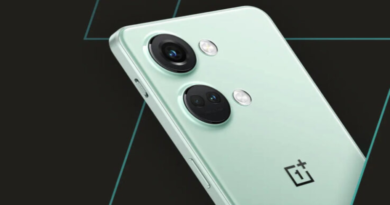Neuralink’s Brain Chip: A Breakthrough in Human-Computer Interaction

New Delhi: Elon Musk’s company, Neuralink, has made headlines with its recent achievement: successfully implanting its brain-computer interface (BCI) chip into a human for the first time. While specifics about the patient and the implant’s purpose remain confidential, here’s a simplified rundown of what you need to know.
The Milestone:
On X, Elon Musk announced that the initial surgery went smoothly, with the patient recovering well. Early results show promising detection of neuron spikes, which are signals used by cells in the brain to communicate.
How It Works:
Neuralink uses a robot to precisely implant the BCI into a specific brain region responsible for movement intention. This BCI system interprets brain signals, allowing users to control external devices just by thinking. The implant’s ultra-fine threads facilitate signal transmission within the brain.
Grand Ambitions:
Musk envisions Neuralink’s technology as a solution for various conditions like obesity, autism, depression, and schizophrenia. Their first product, Telepathy, aims to enable device control through thought alone, initially targeting those with limb disabilities.
The Competition:
While Neuralink stands out due to Musk’s fame, other companies like Synchron, Precision Neuroscience, Paradromics, and Blackrock Neurotech are also pioneering similar technologies. These companies have made strides in BCI development, with some already conducting human trials.
Regulatory Hurdles:
Neuralink received clearance from the US FDA for its first human trial, but experts caution that commercial approval may still be years away, even if the device proves safe.
In essence, Neuralink’s breakthrough brings us closer to a future where direct brain-computer interaction is not only possible but potentially transformative for individuals with medical needs.






Pingback: akmens gaminiai
Pingback: สล็อตเว็บตรง
Pingback: AMBKING
Pingback: PlayStar Slot ค่ายสล็อตออนไลน์
Pingback: disposable vape
Pingback: PG Slot ค่ายสล็อต แตกง่ายอันดับ 1
Pingback: ยกตัวอย่างของการเลือก แทงบอล 4 ตังค์
I’m not sure why but this website is loading very slow for me. Is anyone else having this problem or is it a issue on my end? I’ll check back later and see if the problem still exists.
I truly appreciate this post. I have been looking everywhere for this! Thank goodness I found it on Bing. You’ve made my day! Thanks again!
Hey very nice website!! Man .. Excellent .. Superb .. I will bookmark your website and take the feeds additionally…I’m happy to search out numerous helpful information right here within the post, we’d like develop more strategies in this regard, thank you for sharing.
Pingback: คลินิกเสริมความงาม
Pingback: lottorich28
I went over this internet site and I believe you have a lot of superb info, saved to my bookmarks (:.
Pingback: empresa informatica lisboa
What’s Happening i’m new to this, I stumbled upon this I’ve found It positively helpful and it has helped me out loads. I hope to contribute & assist other users like its helped me. Good job.
Pingback: เว็บตรงฝากถอนง่าย
Pingback: Casino VIP programs
Pingback: ยอย
Pingback: heng678
Pingback: EndoliftX
Pingback: aviator slot India
Pingback: รับติดตั้งระบบระบายอากาศ
Pingback: pinco
I believe you have noted some very interesting points, appreciate it for the post.